Canon PowerShot SX100 IS Review
Canon PowerShot SX100 IS
It's not every day that Canon launches a new series of cameras. We take a look at the first "family camera".
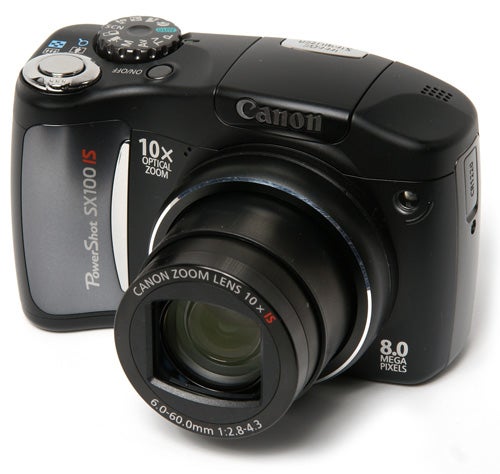
Verdict
Key Specifications
- Review Price: £229.99
As well as its dominance of the digital SLR market, Canon maintains a strong position at the top of the digital compact camera market too, with four very successful lines of cameras. The most popular are the Digital IXUS series of high-quality, premium-priced ultra-compacts, the best of which combine fashionable style with high performance and generally excellent picture quality. Alongside these are the PowerShot A-series, which range from sub-£100 budget models such as the 3x zoom A460 up to advanced models like the new 6x zoom A720 IS (review coming soon) or A650 IS costing nearly £300. On top of this there the current models in the Super-zoom PowerShot S-series and the semi-professional PowerShot G-series, both of which cost around £350.

However there is one section of the market where Canon is lagging behind somewhat, and that is the small but growing number of reasonably-priced longer-zoom compacts, as exemplified by the highly successful Panasonic Lumix DMC-TZ2 and TZ3, the Fujifilm S5800, the Ricoh Caplio R7, the Casio Exilim EX-V7 and the Pentax Optio Z10. With zoom ranges from 7x to 10x these cameras offer more versatility than the typical 3x compacts that have traditionally made up a lot of Canon’s range, so it’s not entirely surprising that Canon has launched a new camera straight into this sector of the market, and wants to launch some more.
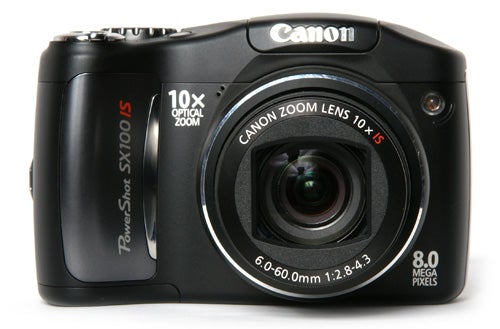
The new PowerShot SX100 IS is the first of a new line of Canon cameras, designed to appeal to a wide variety of users of all experience levels. Canon is describing it as a “family camera”, but what it means is an 8MP camera with a high quality 10x zoom, f/2.8 – f/4.3 image-stabilised lens, a 2.5-inch wide-view monitor, with both automatic and manual exposure functions that will allow the more adventurous user to tackle more creative photography. The SX100 IS was launched in September at a recommended price of £299 exclusively through Dixons in the UK, but is already available in stores for £229. Some online retailers appear to be offering what are presumably imported models for around £200. This is around the same price as the Ricoh R7, and considerably cheaper than the 7-megapixel Panasonic TZ3 currently selling for £235. However Dixons has another exclusive at the moment: the Fujifilm S5800, an 8MP version of the excellent S5700, which sells for just £142.30, so Canon doesn’t get everything its own way.
In fact, it’s probably not entirely fair to compare the SX100 IS with the TZ3 or R7, because it really doesn’t resemble either camera that closely. For a start both of those cameras have fairly sleek, compact metal bodies, while the SX100 IS is made of plastic and is quite a chunky little thing, measuring 108.7 x 71.4 x 46.7 mm and weighing a not inconsiderable 266g empty, or around 316g including the pair of AA batteries that it runs on. This for me is something of a problem, because the camera is designed as a compact, with a single wrist strap. The Fuji S5800 is slightly larger and about the same weight, but has a neck strap and more SLR-like handling. The SX100 IS is too large to fit comfortably in anything but a large pocket, and too heavy to have dangling from your wrist. The Panasonic TZ3 by comparison is 105 x 59.2 x 36.7 mm and 257g loaded, and the Ricoh R7 is only 99.6 x 55 x 23.3mm and 135g. There is a soft case available which may have a belt loop or neck strap, but it’s an optional extra.
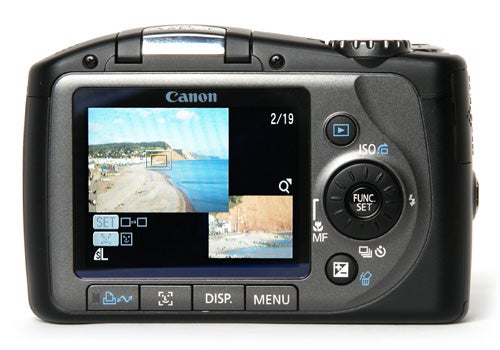
Of course being a Canon the SX100 IS has superb build quality, and the plastic body feels very solid, with no flexing or creaks even when squeezed. The body has a very rounded shape, with all the corners and controls smoothed off leaving no protruding edges. The relatively large size does mean that there’s plenty to hold onto, and the handgrip, while smooth and untextured, is large enough to be comfortable, and there is plenty of room on the back for your thumb, so it provides a secure grip.
The control layout is fairly straightforward. The top plate bears the main mode dial, with a clearly-marked Auto setting, four simple scene programs (portrait, landscape, night snapshot, kids & pets), a scene mode setting with a further seven scene programs, and a full set of manual exposure options. On the back is a large rotary thumbwheel/D-pad, a feature Canon has used on a number of its cameras, often to mixed reactions from users. Some find it impossible to use, while others find it very quick and intuitive. Here its rotary action is used to select scene mode options, enter exposure values in manual mode, and control manual focusing, something for which it is extremely well suited.
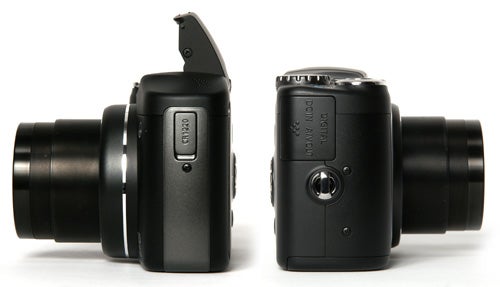
The other controls are a row of buttons below the monitor and the usual array of secondary functions on the D-pad, including focusing mode (normal, macro or manual), ISO setting, drive mode and self timer, and flash mode, although this is only available when the manually-operated flash has been raised. I would have expected that in automatic mode the flash would have popped up by itself, as it does on several other cameras, but instead it merely prompts you to raise the flash with an on-screen warning when shooting in low light.
There is also the usual Canon function button, bringing up an on-screen shooting menu for image size and quality, a versatile array of colour modes, manual flash output adjustment and metering mode. The monitor itself is clear and bright, and has a glare-reducing coating. At 2.5 inches it is a good size, but at 172k pixels it isn’t as sharp as some. For manual focusing a magnified area appears in the middle of the screen, and a two-stage range control makes close-range focusing very accurate, but at longer ranges it is a bit hit-or-miss.
In terms of performance the SX100 IS is well up to Canon’s usual high standard. Start-up time is just over two seconds, which is pretty quick considering the size of the lens. In single-shot mode the shot-to-shot cycle time is also just over two seconds, and in continuous shooting it can manage a consistent 1.3 seconds per shot, or 1.5 seconds per shot if it has to focus. The flash is also reasonably quick, taking approximately nine seconds to recharge after a typical shot. Flash frame coverage is excellent, and the higher position of the pop-up flash reduces the likelihood of red-eye, although there is a facility in playback mode to correct it anyway. One of the selling points of the SX100 IS is its movie mode, but in truth this is nothing special. It can shoot at VGA (640 x 480) resolution at 30fps, and as is usually the case the zoom lens cannot be used in video mode. It does have a “compact” mode, which compresses the video do give extra shooting time. In this mode a 1GB memory card is enough for nearly two hours of shooting, but the quality is a bit ropey. In normal still shooting mode, at maximum quality the same 1GB card is enough for 286 shots.
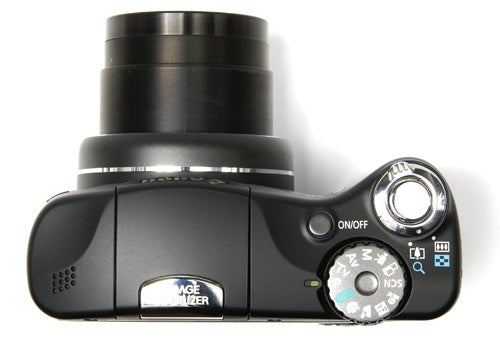
One concern is battery life. Two AA batteries isn’t a lot of power for a camera of this size and specification, especially one with a big image stabilised lens. Canon claims 140 shots, and I was able to take at least this many using the standard alkaline batteries supplied with the camera, but the red battery warning started flashing after only about 70 shots. 140 shots isn’t much by recent standards, and is less than half the duration of the Fuji S5700 (and presumably the S5800) with its 4x AA power source.
Autofocus is also a usual Canon strong point, and indeed the SX100’s AF system is very good. It focuses quickly and accurately in almost any lighting conditions, and seems to be very good at capturing moving objects. Focusing in darkness is aided by a powerful AF assist lamp with a range of approximately 4m.
Canon’s optical image stabilisation system is widely regarded as one of the best on the market, and it proves its worth here once again, allowing sharp hand-held shots at least three stops slower than would otherwise be possible.
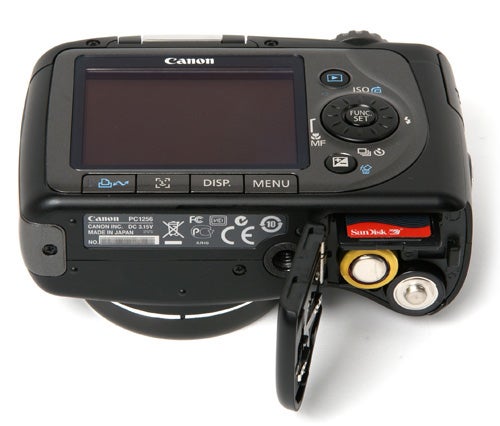
The SX100 also score high marks for its overall picture quality, although it isn’t entirely problem-free. The lens is extremely good, providing almost no barrel distortion at wide angle and only a tiny amount of pincushion distortion at telephoto. The sharpness and level of fine detail is excellent in the centre of the frame, but it does drop off somewhat towards the edges, with some noticeable chromatic aberration. Colour and exposure are also excellent, and the dynamic range of the 1/2.5-inch CCD is surprisingly good, providing both highlight and shadow detail on high-contrast shots. The only real problem is image noise, which is present in all shots over 100 ISO, with 800 ISO and the maximum 1600 ISO being particularly bad. This is odd, since high-ISO capability is another advertised feature of the camera. All in all however, the SX100 IS is an impressive camera for the money, even if its weight and bulk will mean it gets used less often than it should.
”’Verdict”’
For a relatively modest price the Canon PowerShot SX100 IS offers a good range of features to accommodate both novice and more experienced photographers. Its long zoom range gives it added versatility, and its fast performance, superb AF system and high image quality are capable of producing excellent results in a wide range of situations. Its only disadvantages are its bulk and weight, and its poor high-ISO noise reduction.
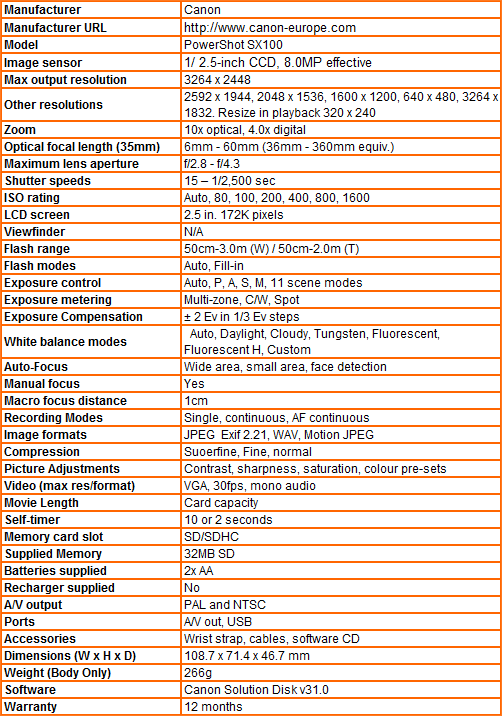
”Over the next few pages we show a range of test shots. On this page the full size image at the minimum and maximum ISO settings have been reduced to let you see the full image, and a series of full resolution crops have taken from original images at a range of ISO settings to show the overall image quality.”
—-
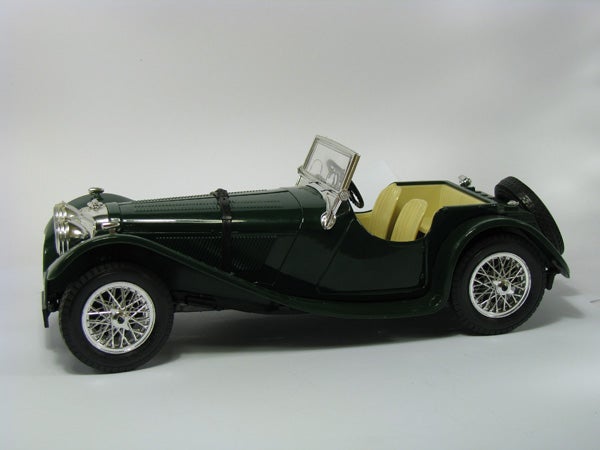
This is the full frame at 80 ISO.
—-
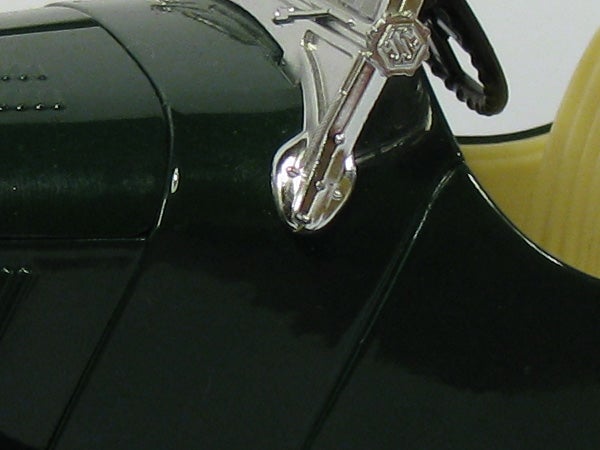
80 ISO, and the image quality is good, with accurate colour and no noise.
—-
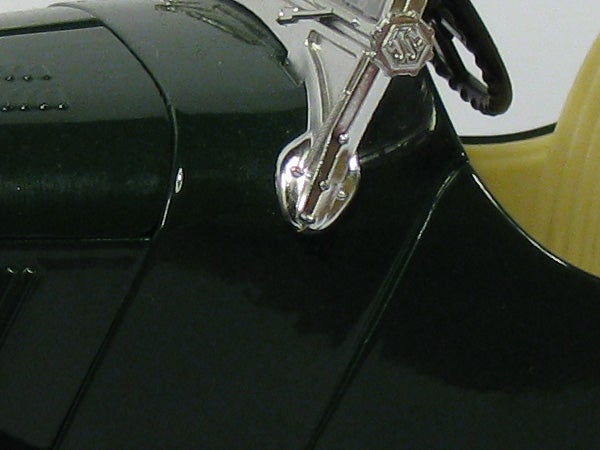
100 ISO, and still no appreciable noise.
—-
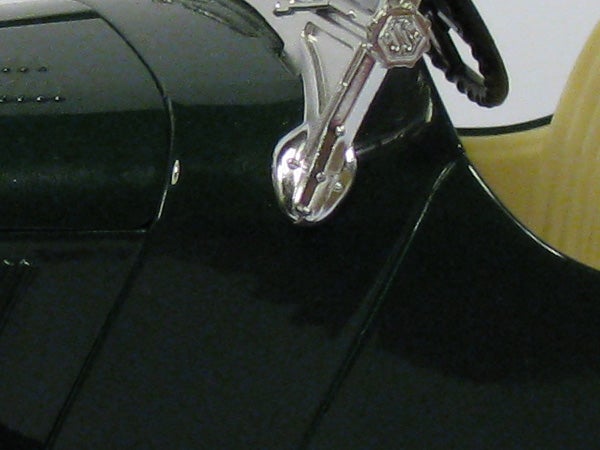
At 200 ISO there is some noise visible in the darker areas.
—-
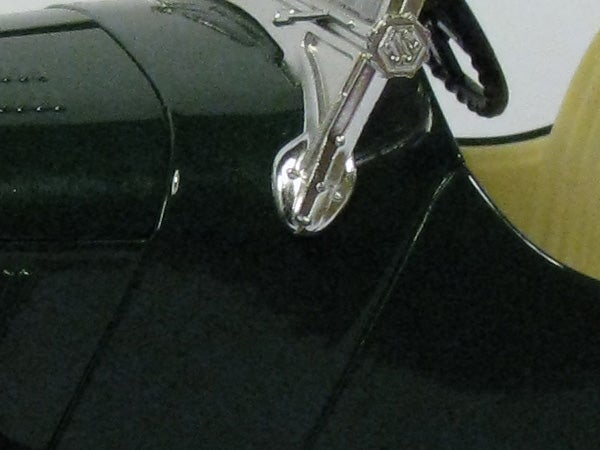
Luminance noise is more noticeable at 400 ISO.
—-
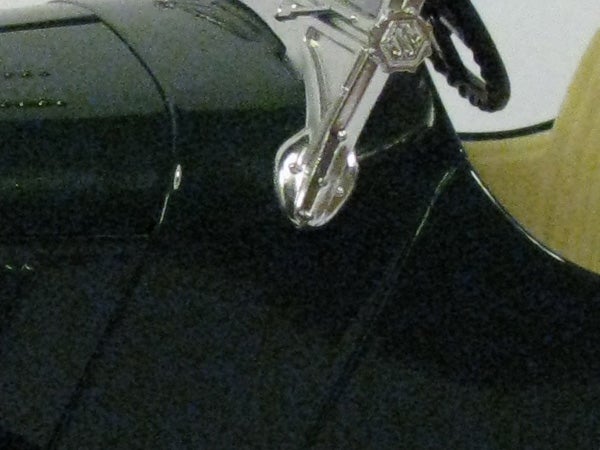
Image quality is greatly reduced at 800 ISO.
—-
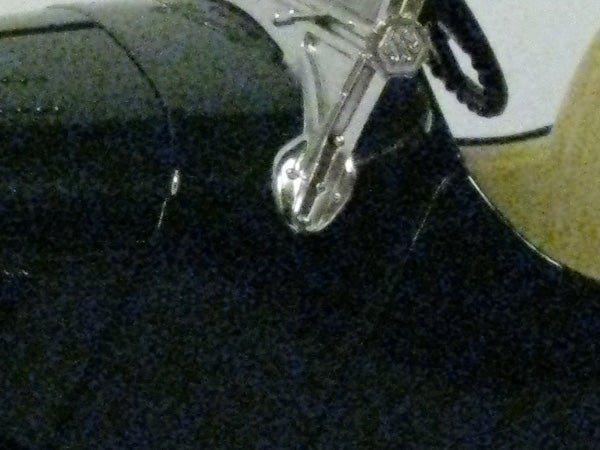
At 1600 ISO the image quality is very poor, and would not print well.
—-
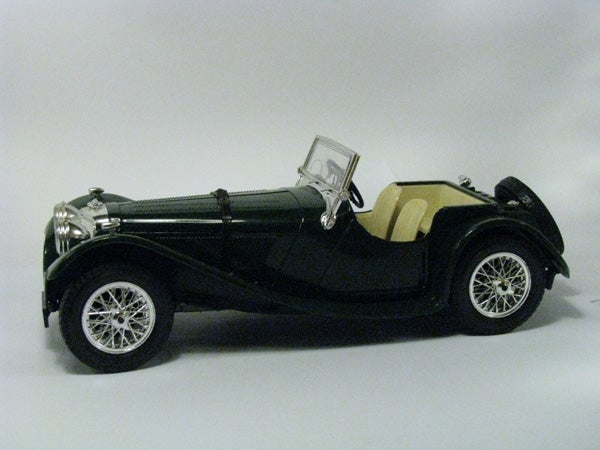
This is the full frame at 1600 ISO.
—-
”A range of general test shots are shown over the next two pages. In some cases, the full size image has been reduced for bandwidth purposes, and a crop taken from the original full resolution image has been placed below it to show the overall image quality. Some other pictures may be clicked to view the original full-size image.”
—-

Here’s my usual detail test shot of the West Window of Exeter Cathedral, for you to compare with other cameras. See below for a full res crop, or click to see the whole picture.
—-

The overall level of detail is very good.
—-

The lens produces very little barrel distortion at wide angle.
—-
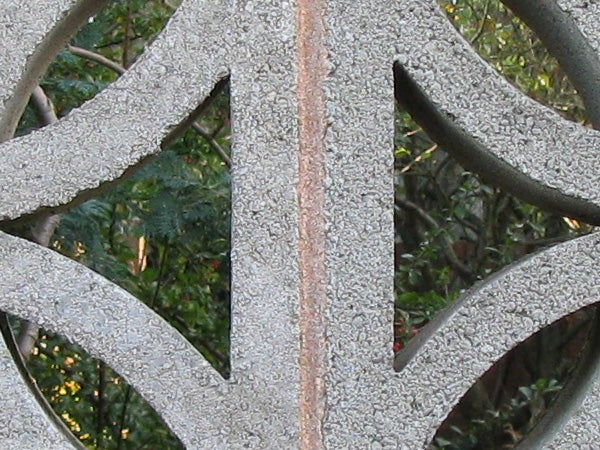
The centre of the frame is pin-sharp.
—-
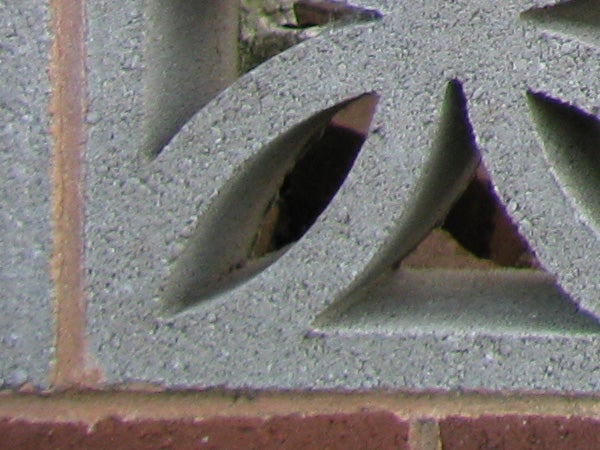
It is less sharp at the corner of the frame, with some chromatic aberration.
—-

There is a little pincushion distortion at the telephoto end, but not enough to worry about.
—-
”A range of general test shots are shown over the next two pages. In some cases, the full size image has been reduced for bandwidth purposes, and a crop taken from the original full resolution image has been placed below it to show the overall image quality. Some other pictures may be clicked to view the original full-size image.”
—-

The wide-angle end of the zoom is equivalent to 36mm, wider than average for a compact.
—-

The telephoto end is equivalent to 360mm, great for zooming in on tiny details.
—-
Canon’s colour reproduction is as good as ever.
—-
The 8MP sensor has surprisingly good dynamic range, with both highlight and shadow detail in this high-contrast shot.
—-
Trusted Score
Score in detail
-
Value 8
-
Image Quality 9
Features
| Camera type | Digital Compact |
| Megapixels (Megapixel) | 8 Megapixel |
| Optical Zoom (Times) | 10x |
| Image Sensor | CCD |

